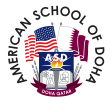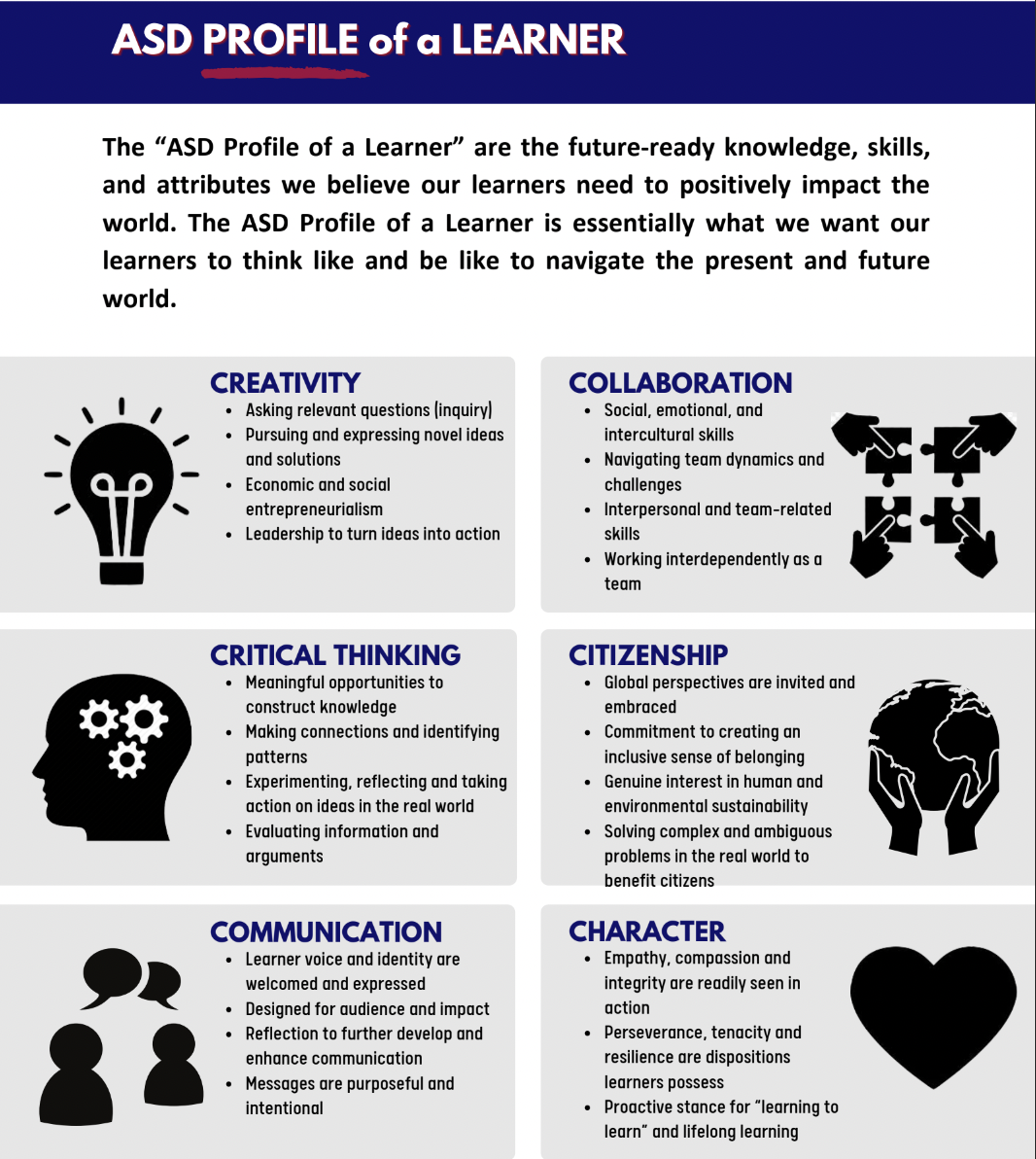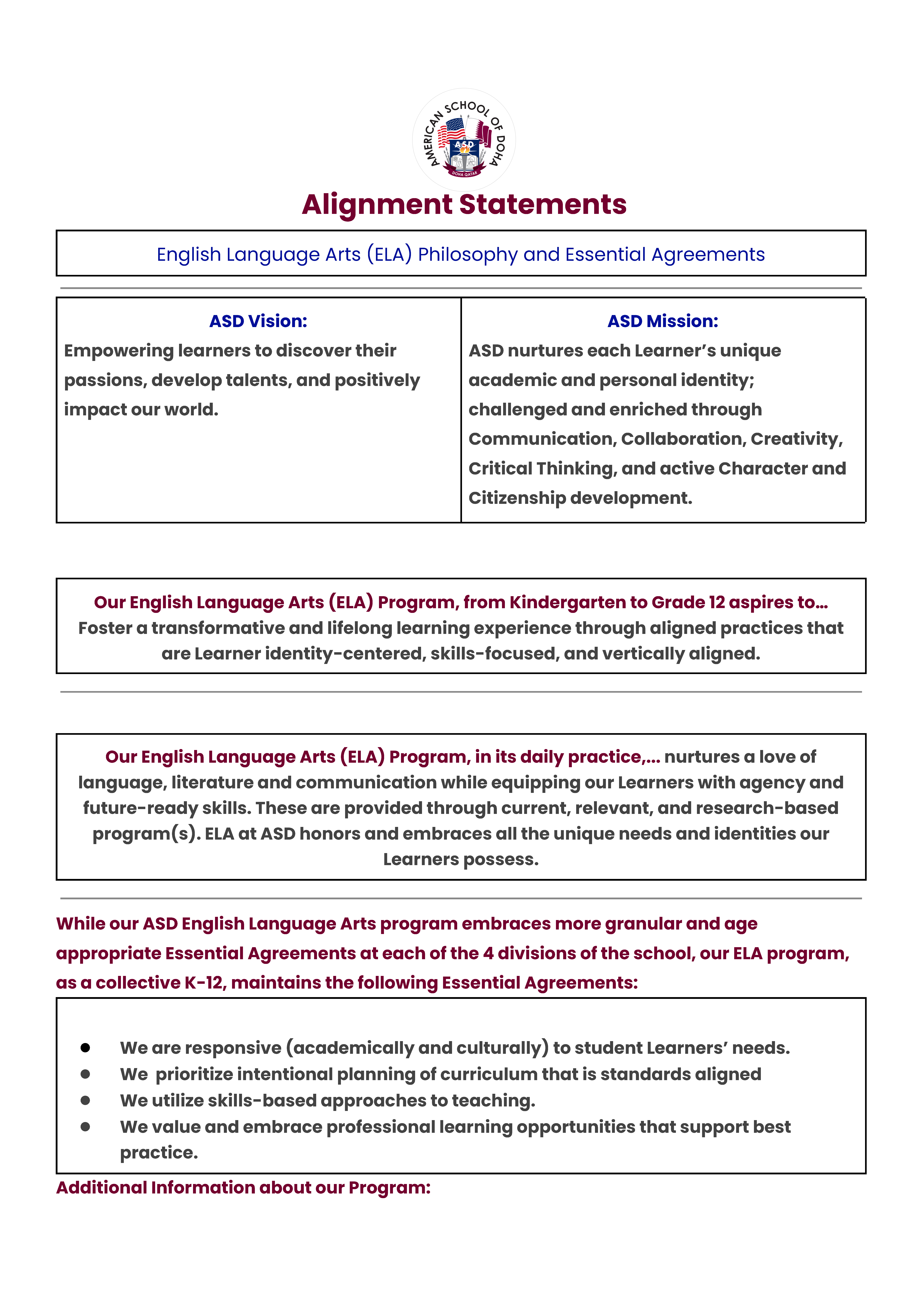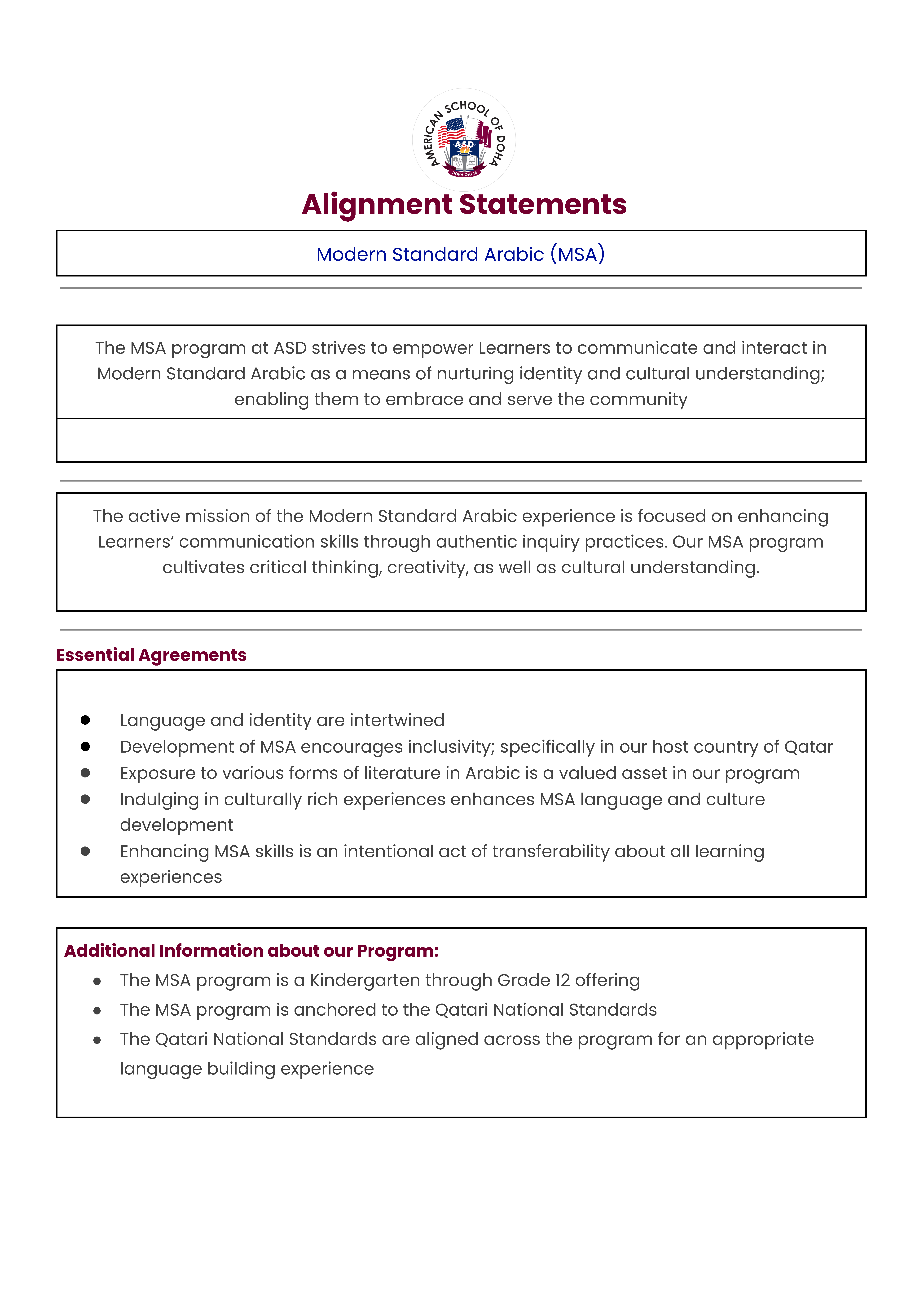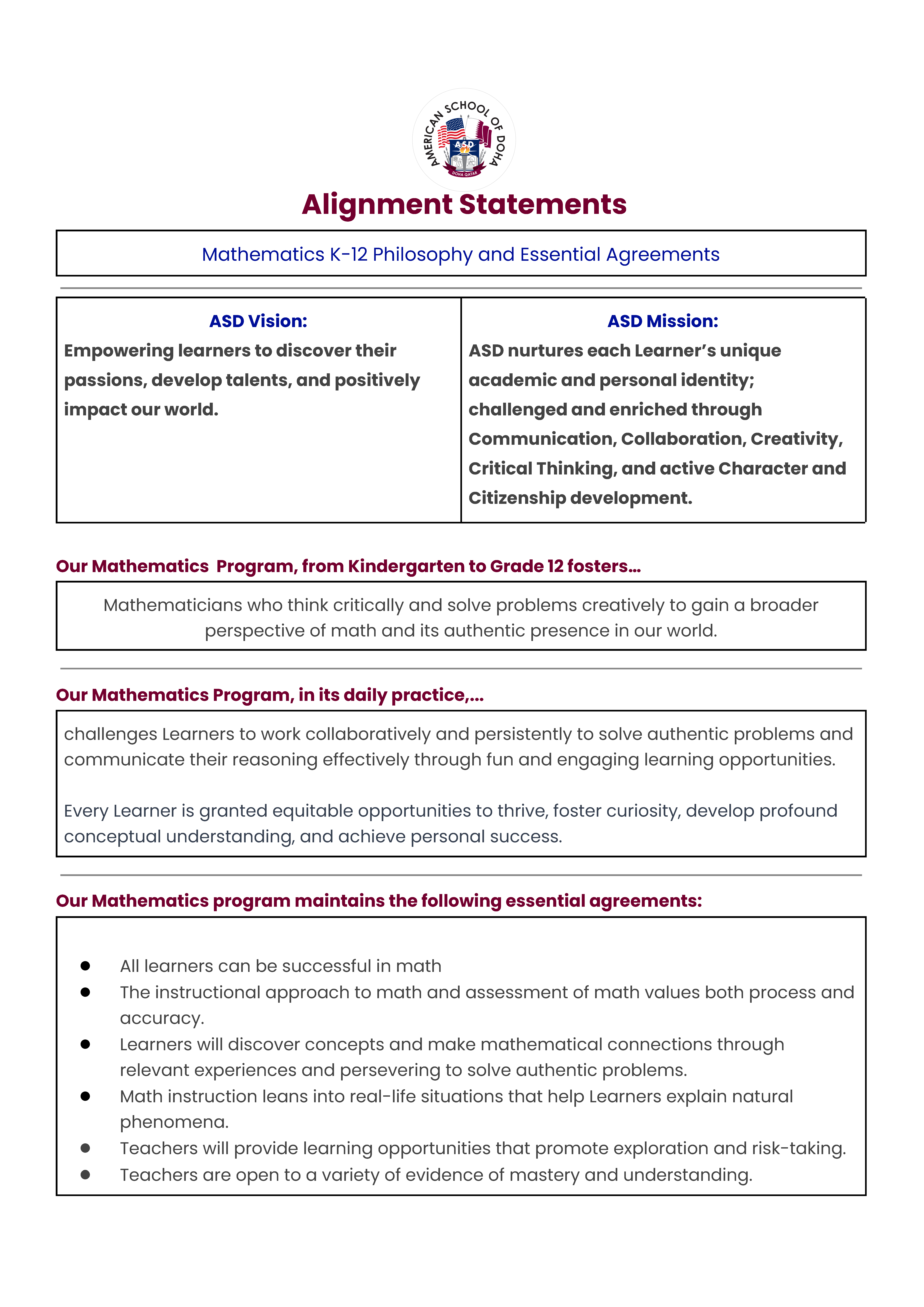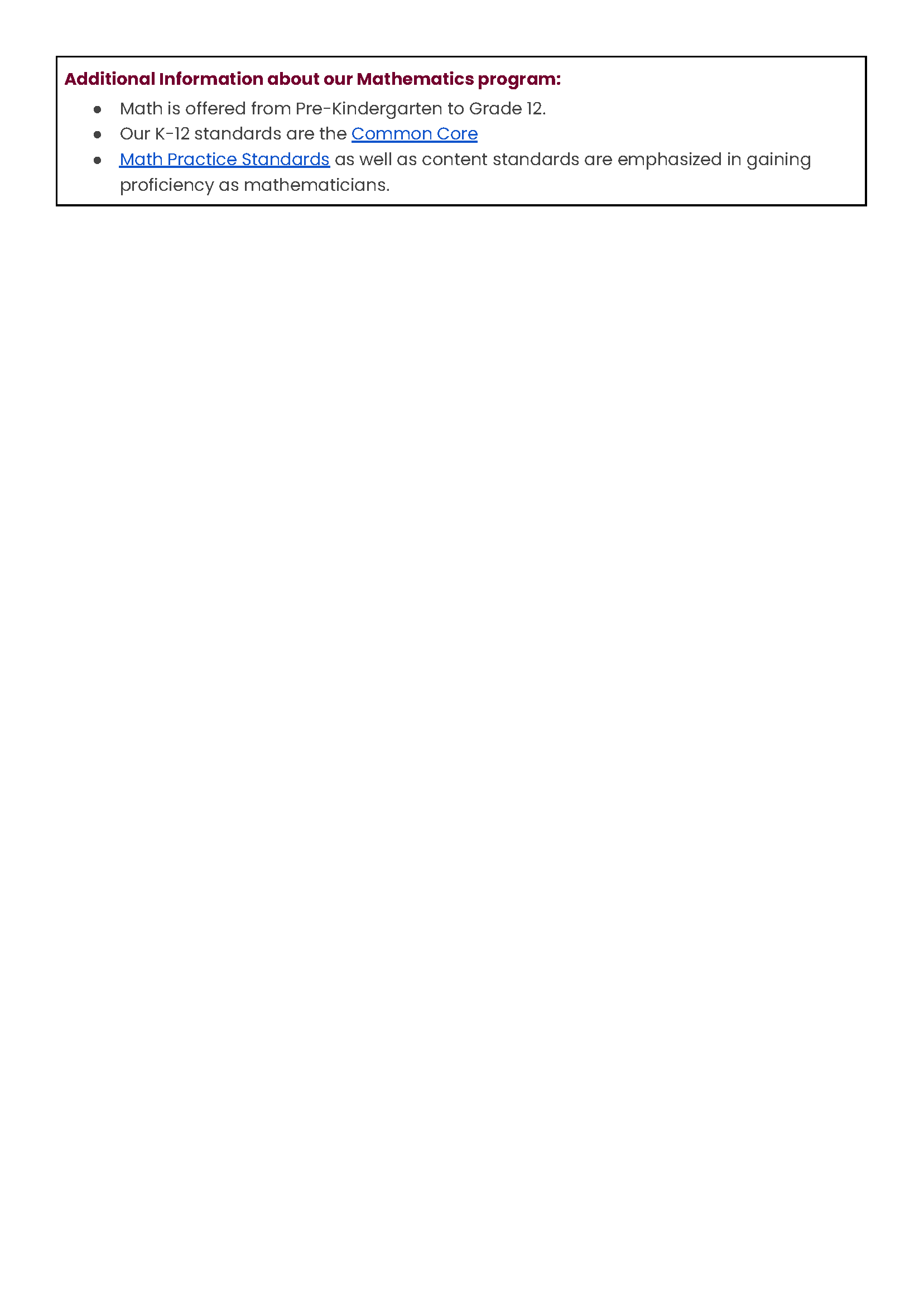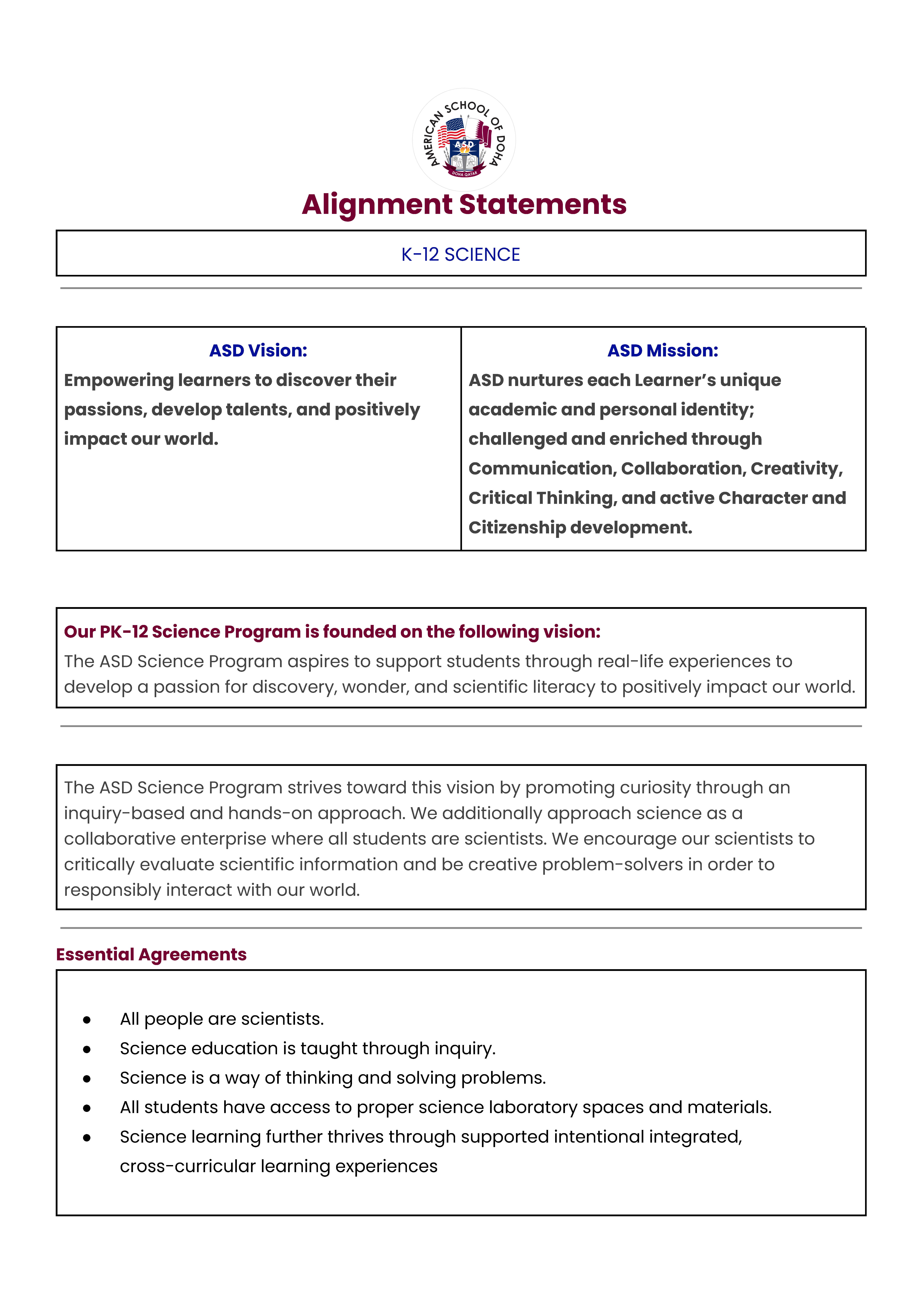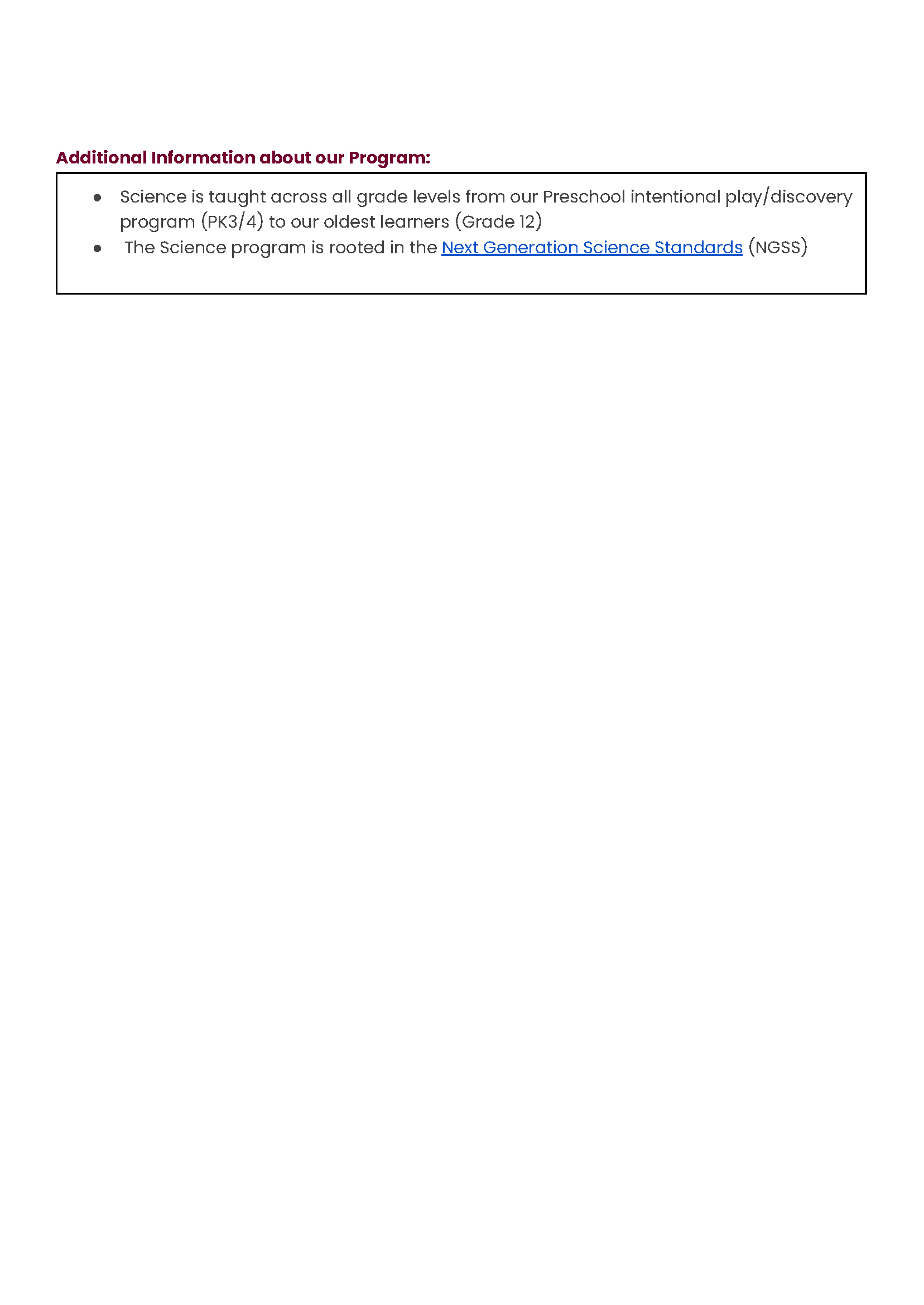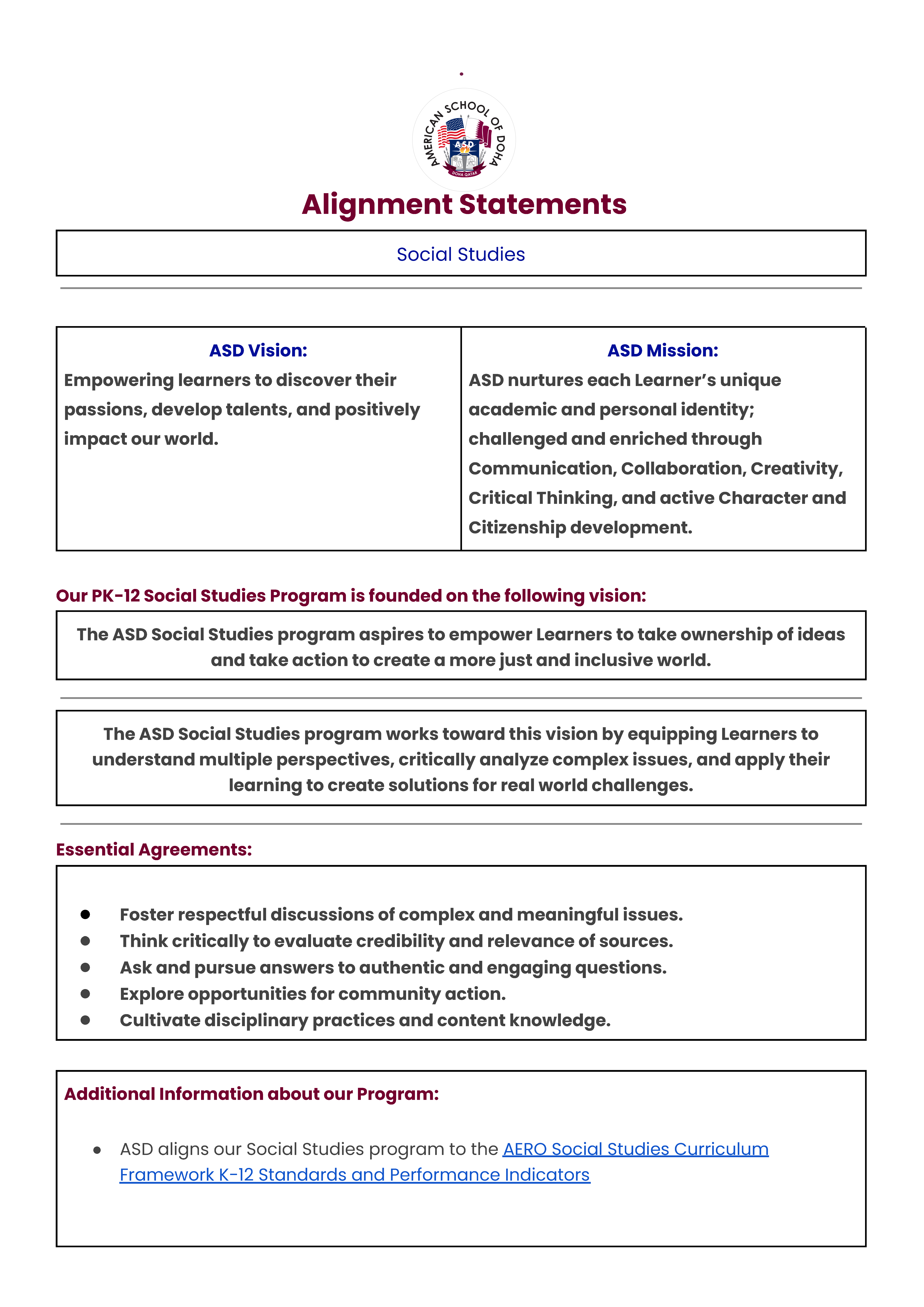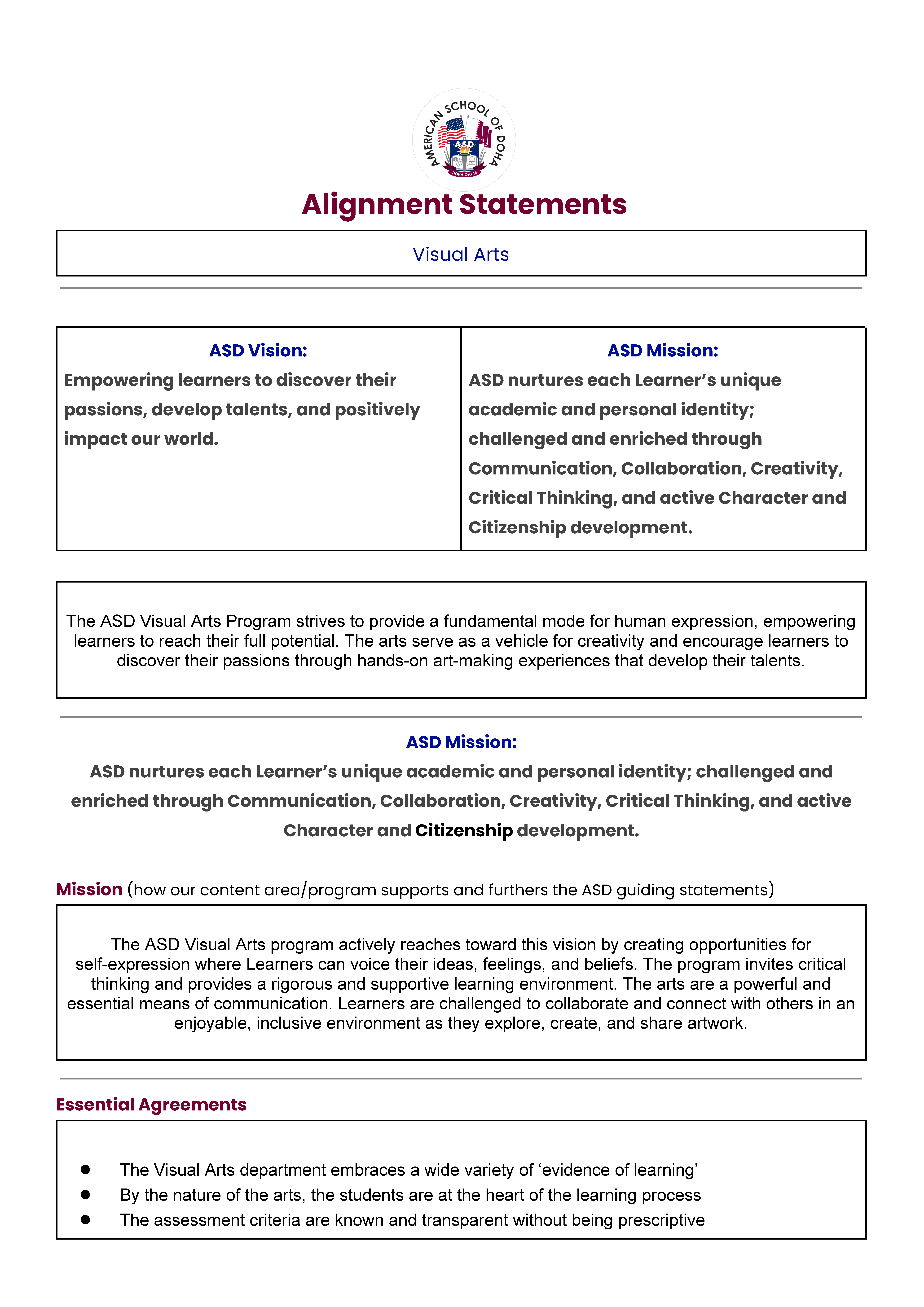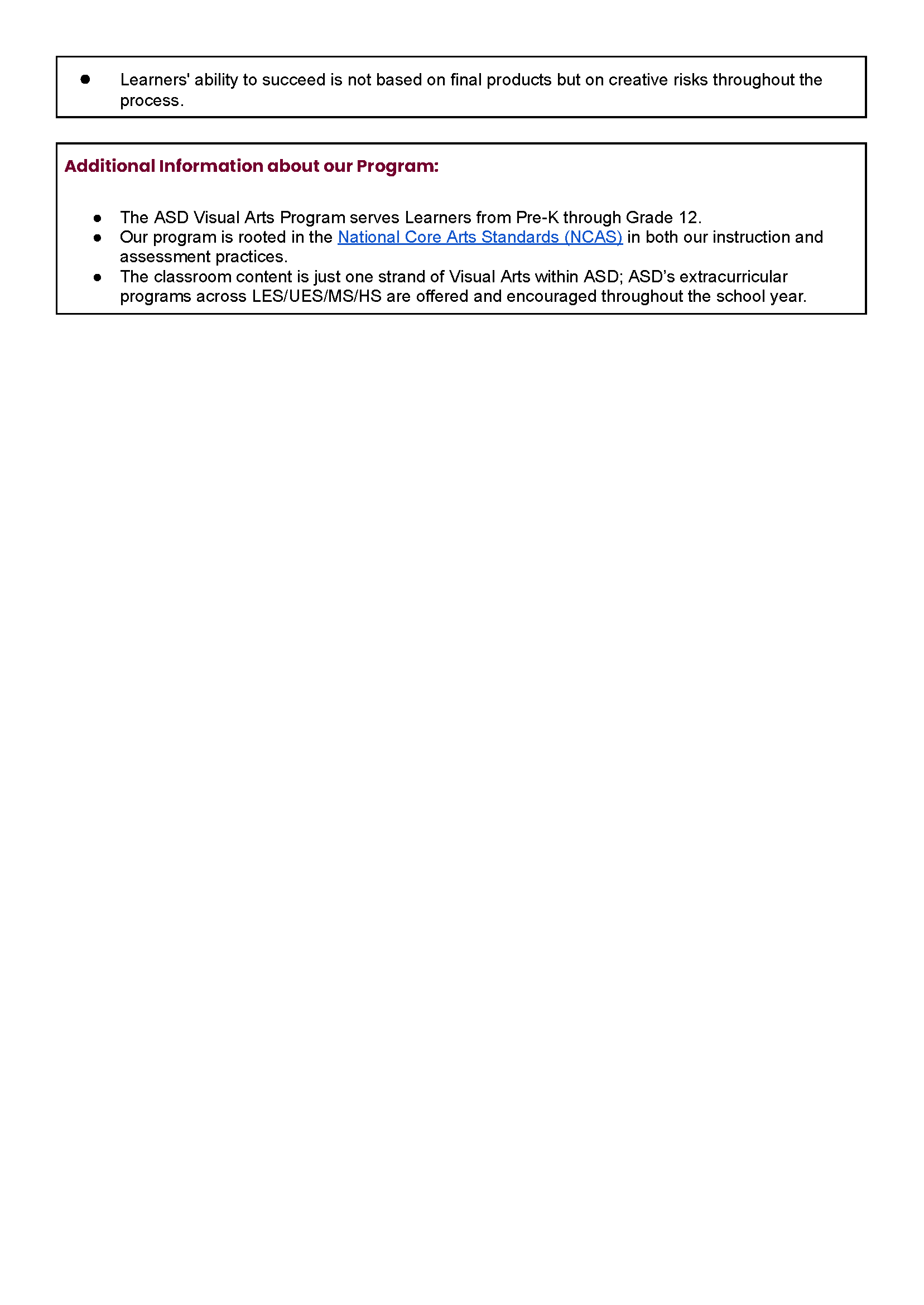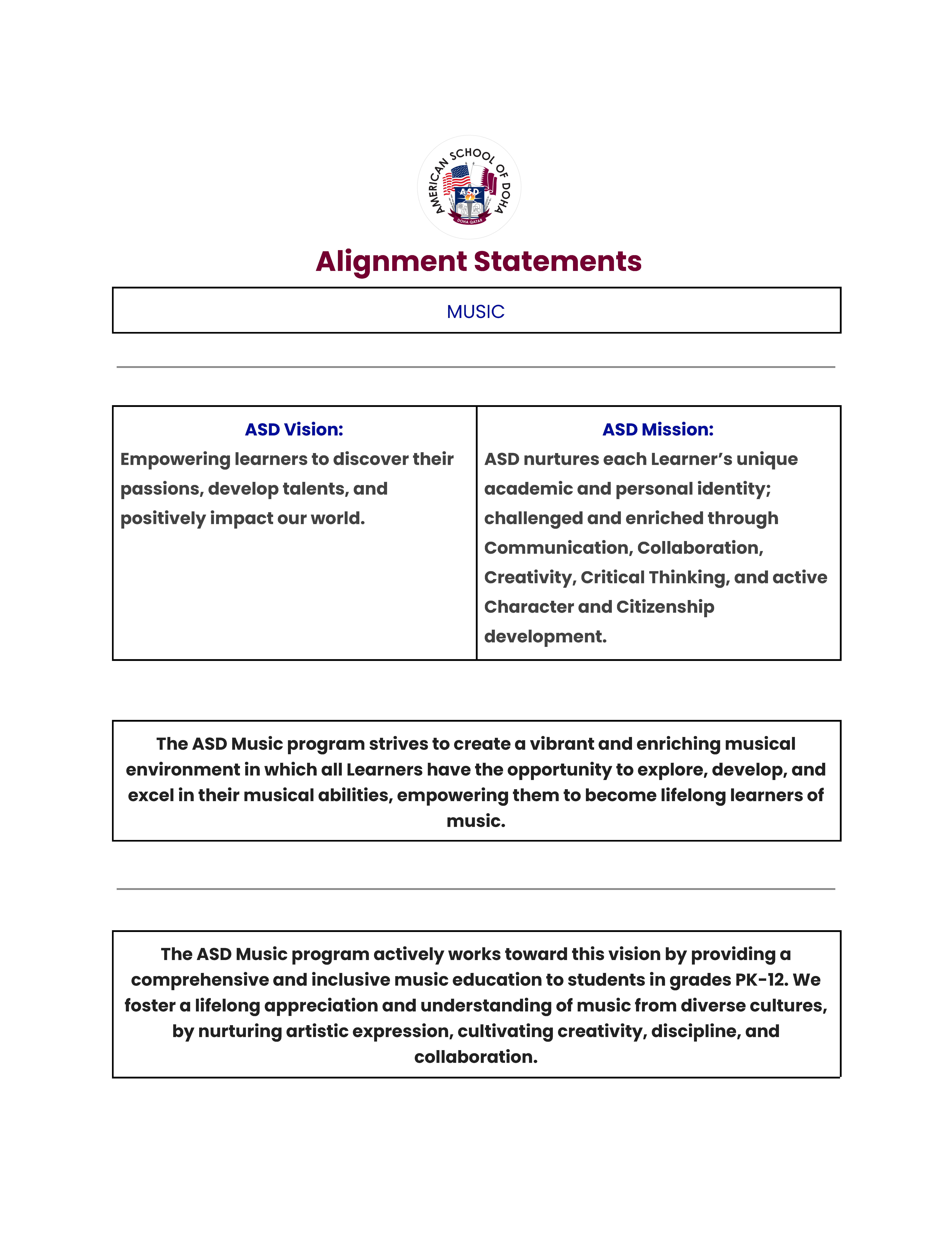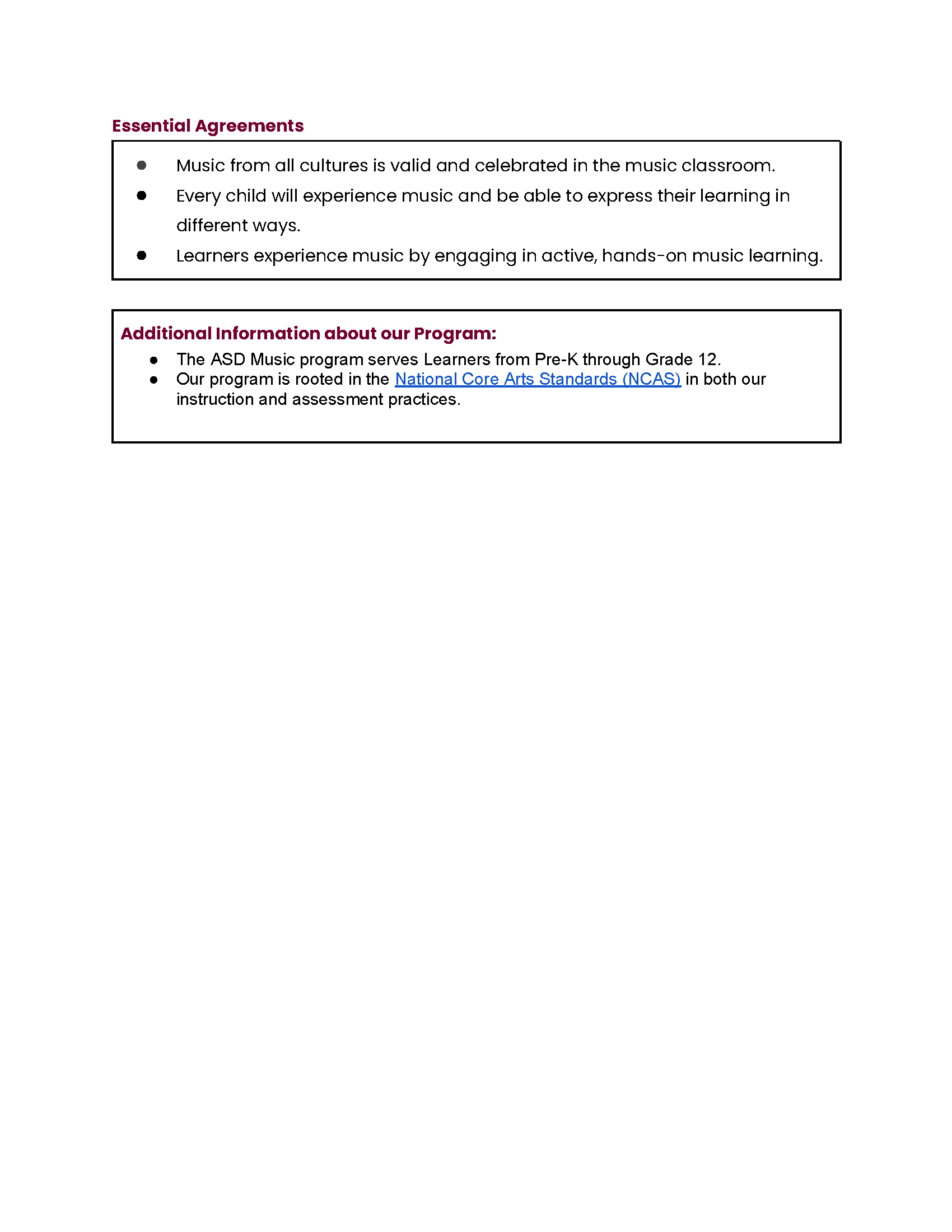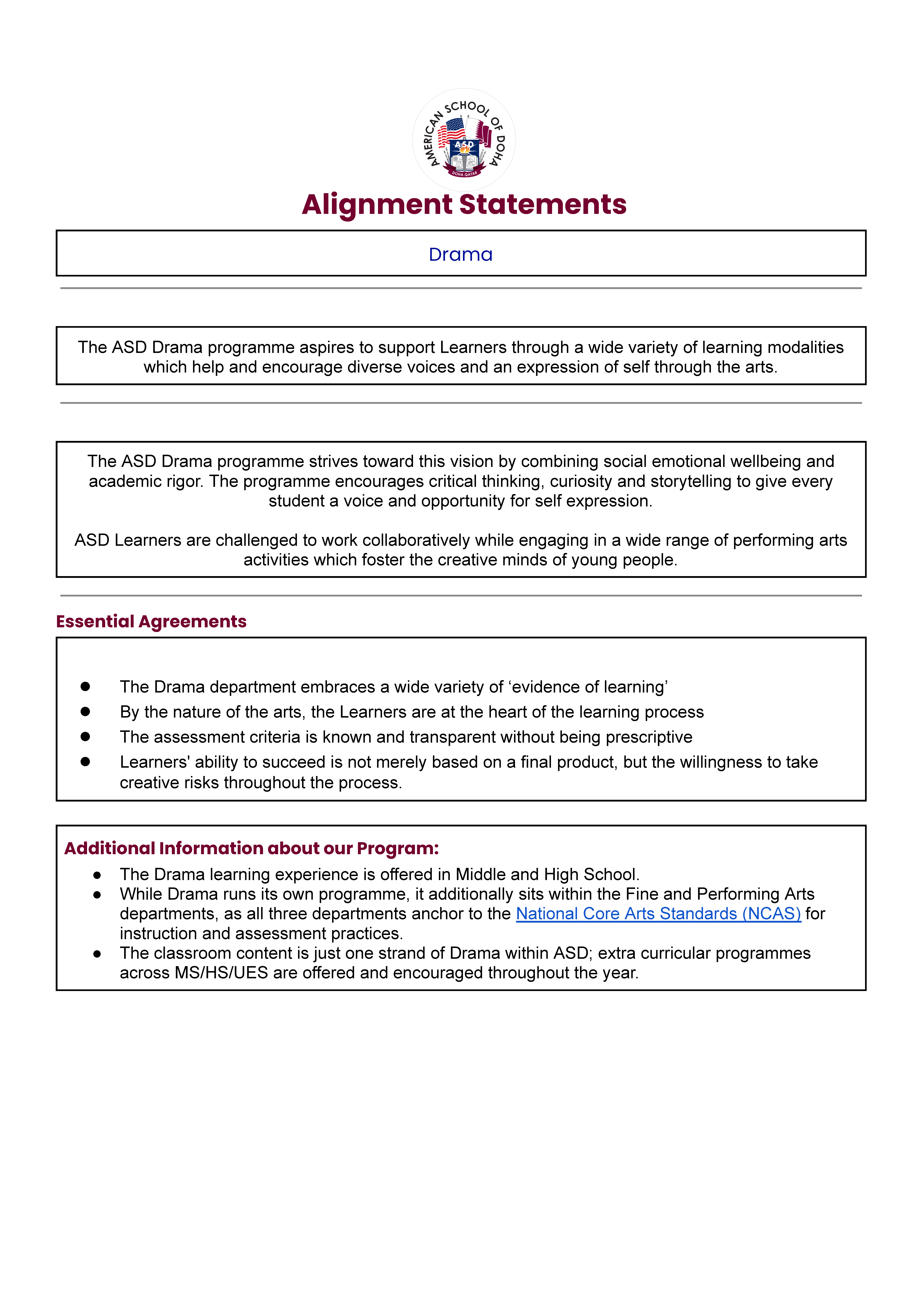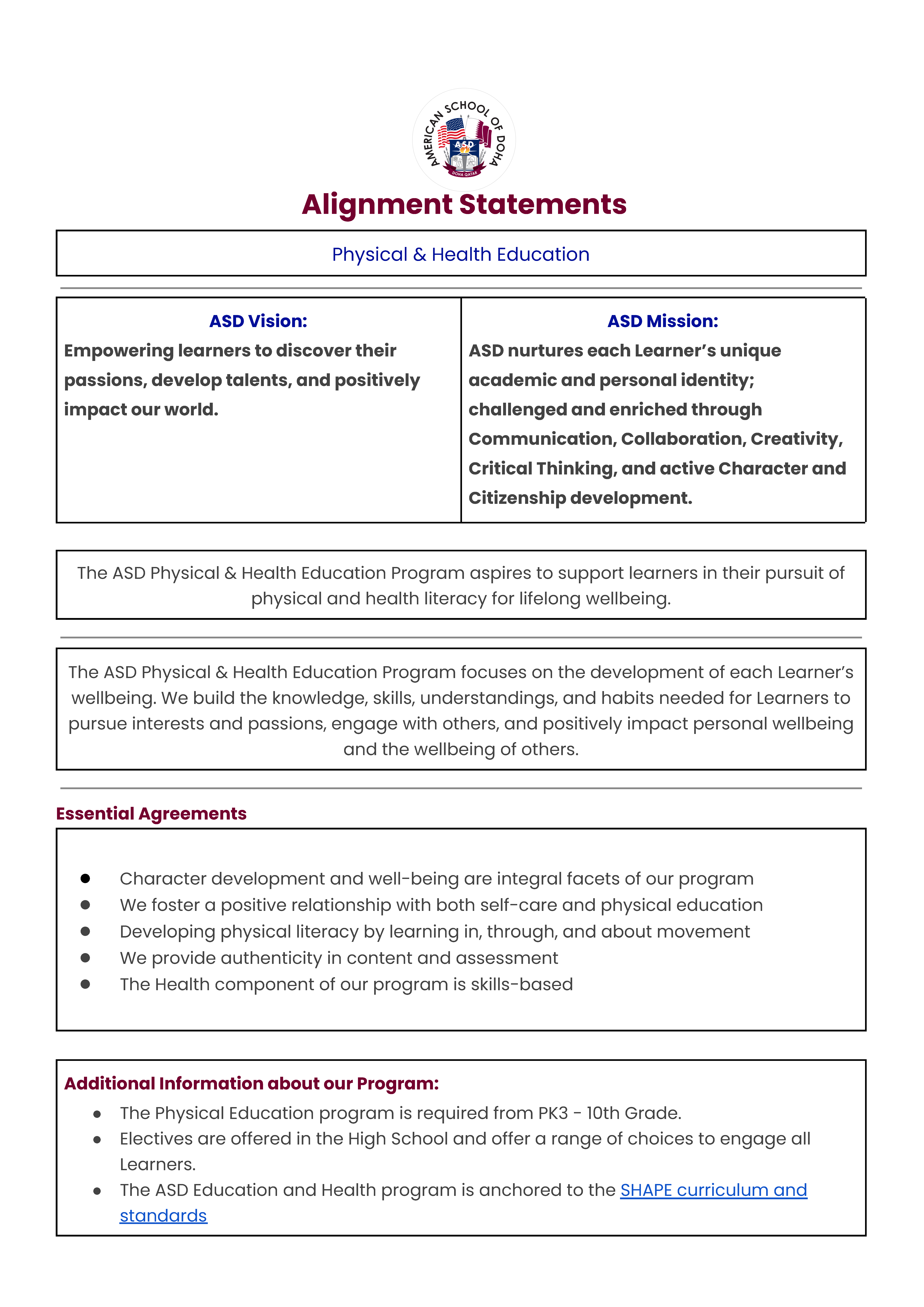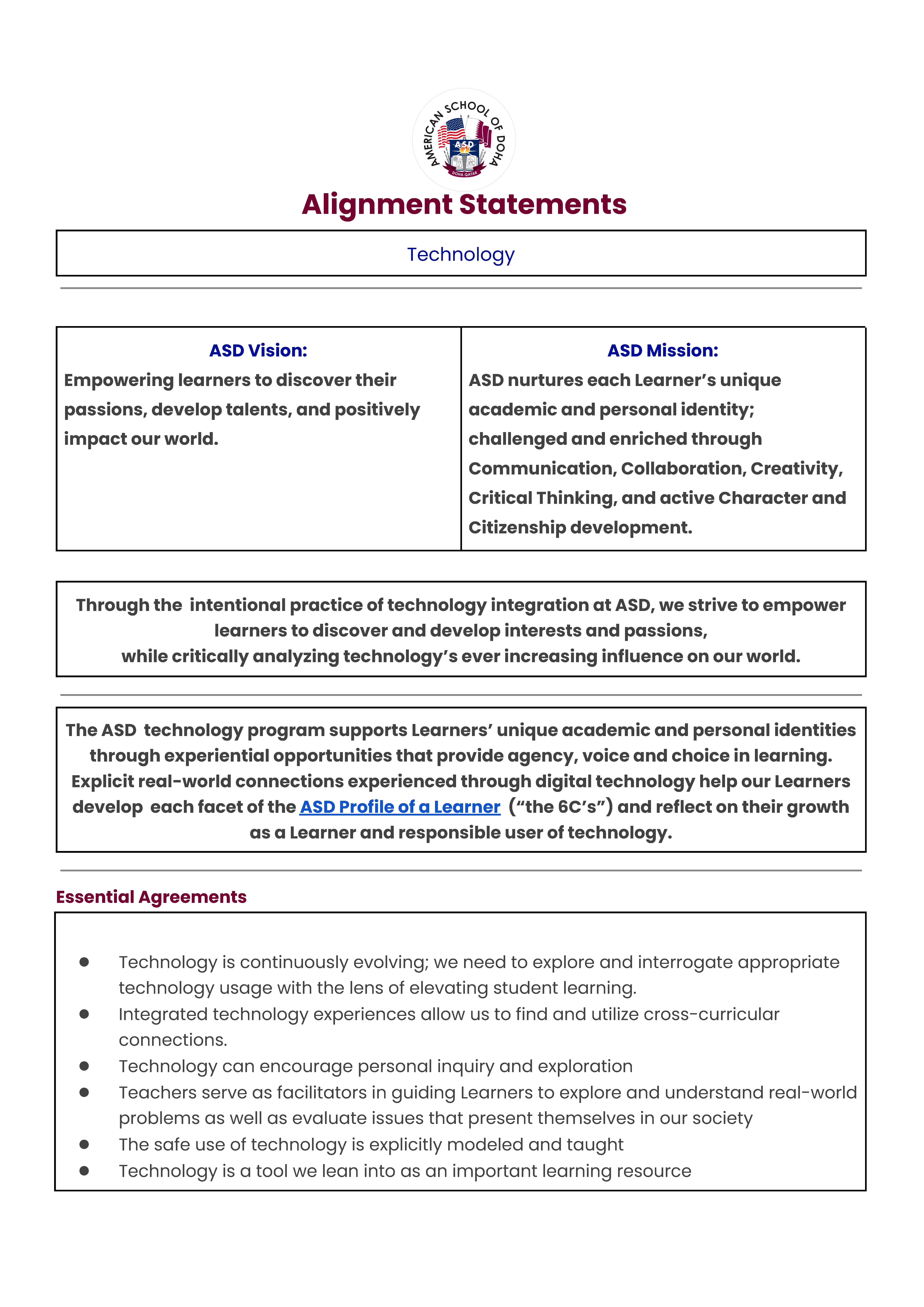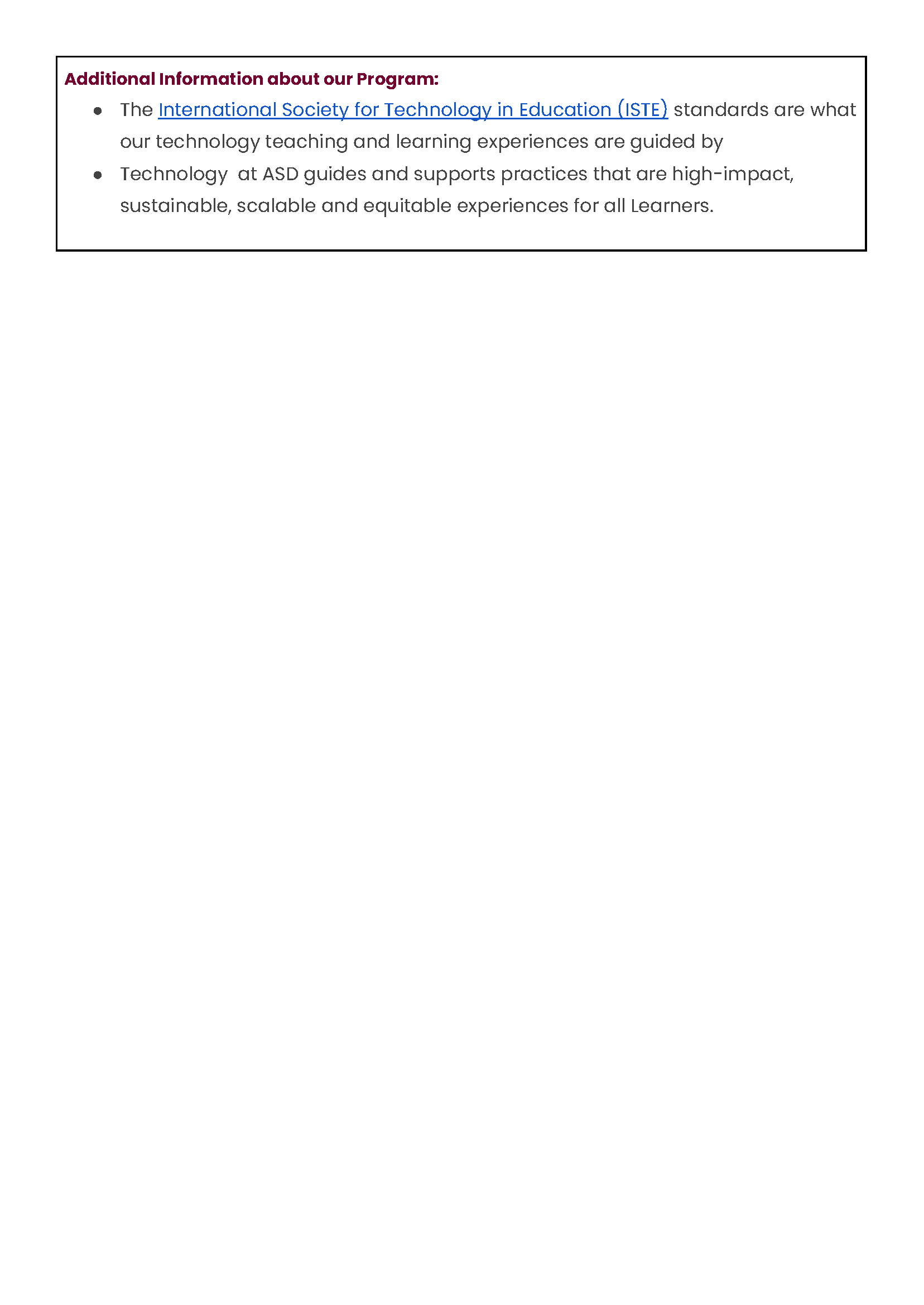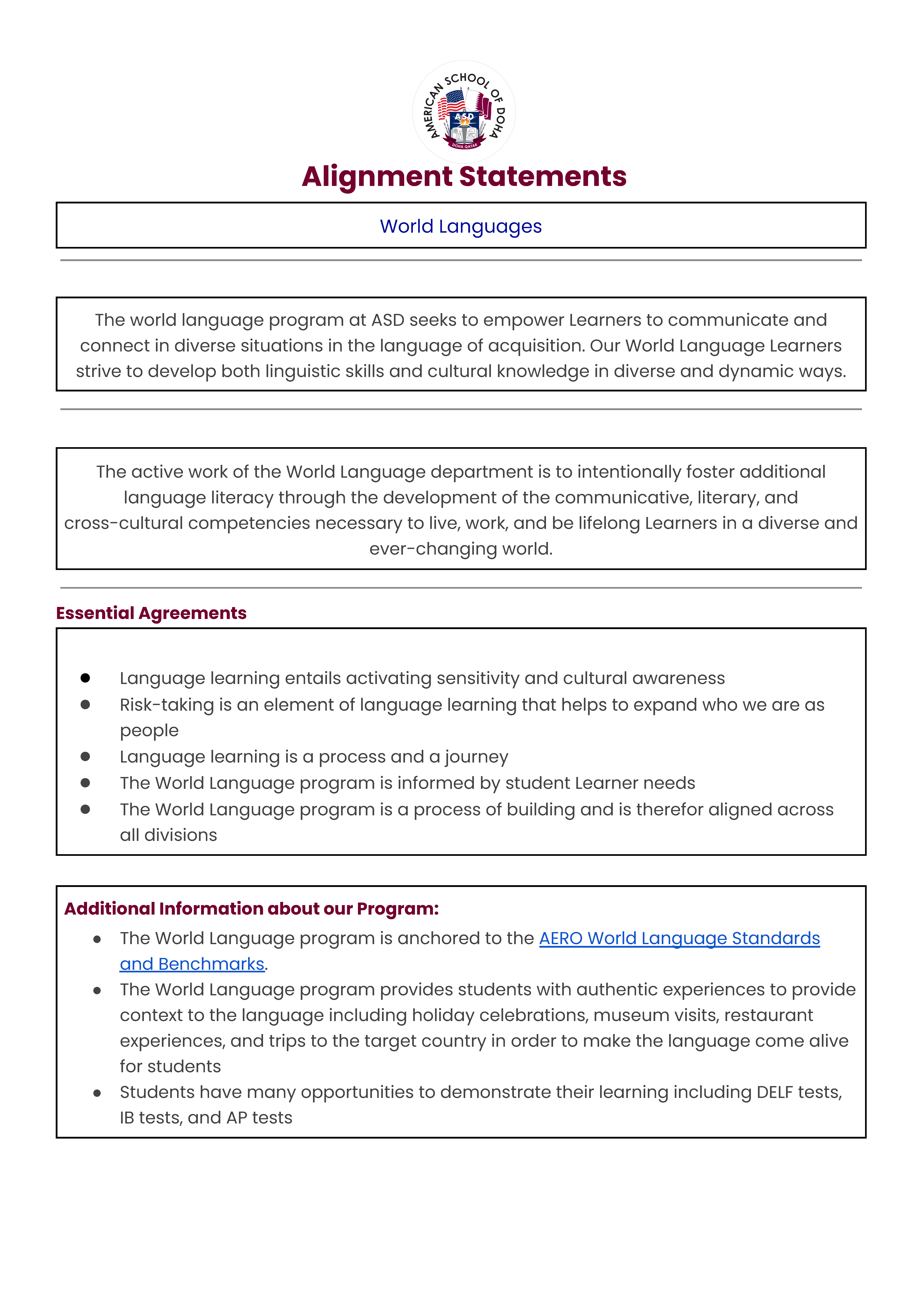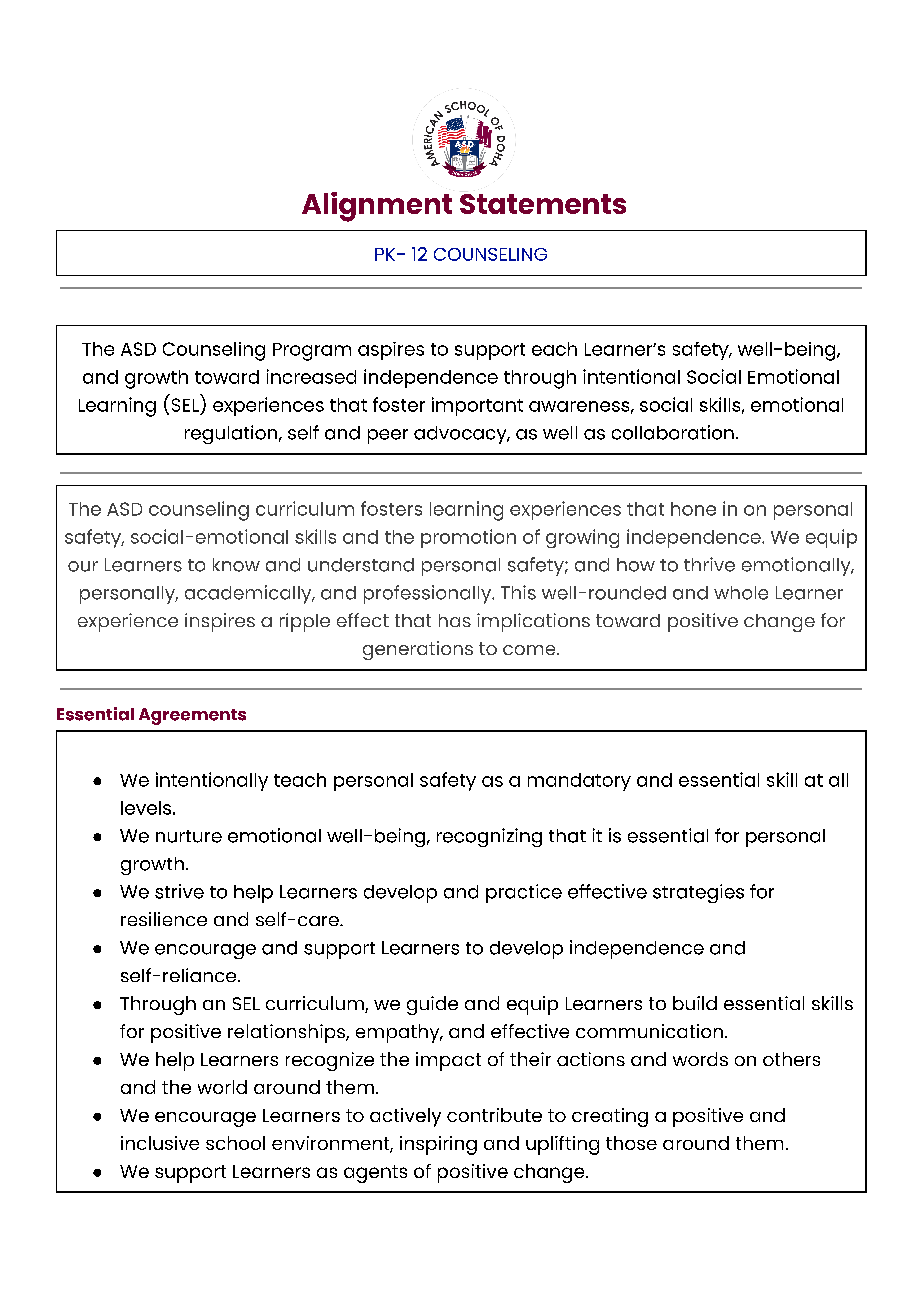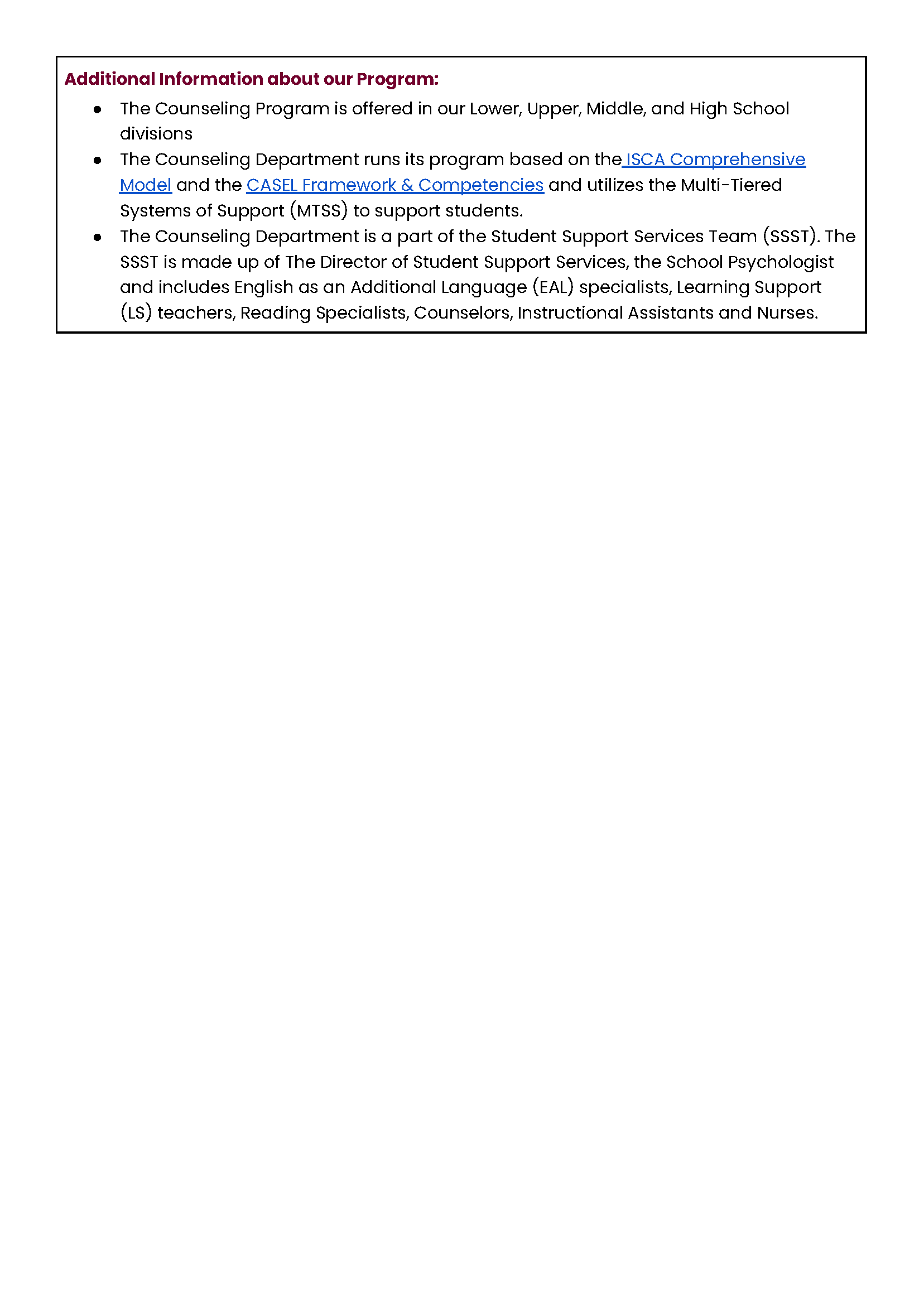Teaching and Learning
We are all part of a learning community and on a continuous learning journey at ASD. Our mission, vision, and values at ASD continue to support the growth, development, and achievement for all learners.
Learning at ASD is challenging, experiential, inspiring, and fun. Our community of learners, encompassing all students and all adults, engage in opportunities that invite curiosity, generate challenge, and enhance personal growth.
Our learning principles emphasize what we value as a learning community. The ASD learning principles highlight that learning best occurs when
- Learners actively construct meaning to build personal understanding
- Learners engage in collaborative experiences where learning occurs with and from one another
- Learners have clarity of what they are learning and why it is significant
- Learners know where they are and how to strive forward when guided with effective and timely feedback
- Learners have ownership of their learning
- Learners readily see the transfer of learning across disciplines
- Learners have experiences that value process, performance, and product
- Learners engage in reflective practices and self-assessment
- Learners feel a sense of belonging and safety
Through the ASD experience, including PreK-12 standards that are anchored in the best of American education, our learners develop the knowledge, skills, and dispositions that lead to becoming positive, active global citizens.
###this is the code that was in the Health button, way down below, we took it off because the pdf links were blank, this is a good way to add a button with in a button

Dr. Heather Vlach
Director of Academic & Strategic LeadershipOffice: +974 4459 1500
Teaching and Learning
We are all part of a learning community and on a continuous learning journey at ASD. Our mission, vision, and values at ASD continue to support the growth, development, and achievement for all learners.
Learning at ASD is challenging, experiential, inspiring, and fun. Our community of learners, encompassing all students and all adults, engage in opportunities that invite curiosity, generate challenge, and enhance personal growth.
Our learning principles emphasize what we value as a learning community. The ASD learning principles highlight that learning best occurs when
- Learners actively construct meaning to build personal understanding
- Learners engage in collaborative experiences where learning occurs with and from one another
- Learners have clarity of what they are learning and why it is significant
- Learners know where they are and how to strive forward when guided with effective and timely feedback
- Learners have ownership of their learning
- Learners readily see the transfer of learning across disciplines
- Learners have experiences that value process, performance, and product
- Learners engage in reflective practices and self-assessment
- Learners feel a sense of belonging and safety
Through the ASD experience, including PreK-12 standards that are anchored in the best of American education, our learners develop the knowledge, skills, and dispositions that lead to becoming positive, active global citizens.
Gail Seay
Director of Teaching and Learning
[email protected]
Office: +974 4459 1500

Dr. Heather Vlach
Director of Academic & Strategic LeadershipOffice: +974 4459 1500
